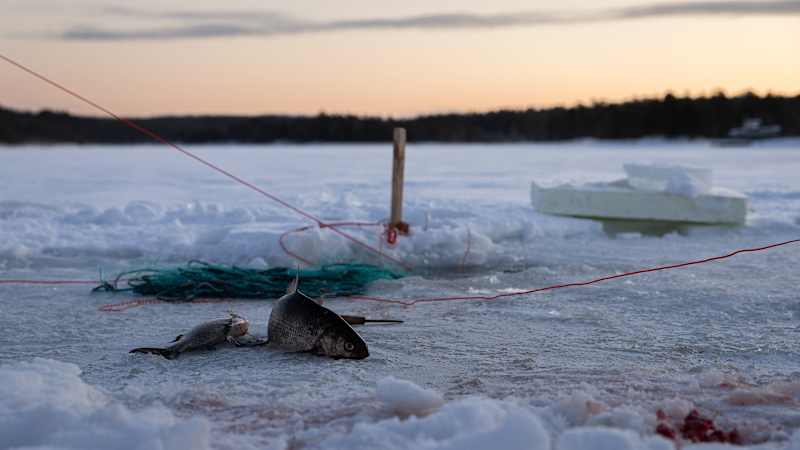Lake Inari’s winter fishing season has shortened – some fishermen focus on pike and perch instead of whitefish

Researchers interviewed fishermen in Lake Inari. Their findings confirm weather and hydrological studies that climate change is also affecting Lake Inari.
Lake Inari’s winter fishing season has shortened and the open-water season has lengthened and warmed, according to a study by the University of Lapland’s Arctic Centre.
Researchers have interviewed commercial fishermen in Inari and combined their observations with long-term weather and water observations.
In mid-winter, the change in climate is reflected in fewer long periods of hard frosts lasting up to a week. As a result, fishermen will no longer have to deal with the so-called “dead days” as often as they used to.
However, according to Turunen, very mild periods in the middle of winter make fishing difficult. The ice cover is thinner or there may be water between the ice layers. In mild winters, the snow cover may be thick, but there is little load-bearing steel ice.
– Snow, water and slush make it difficult to move and work, and in addition, problematic ice conditions increase the risk of accidents, Minna Turunen states.
Let’s try to survive
The adaptation of the commercial fishermen of Inarijärvi to the observed and expected risks is variable.
Most of the fishermen interviewed for the study have only tried to survive the difficult situation, but they have also made long-term plans.
A large part of the interviewees plan to catch whitefish, which is in the greatest demand, as efficiently as possible. However, according to Turunen, the risk is ecologically unsustainable fishing pressure on the declining whitefish populations.
In addition, focusing on whitefish fishing may be a risky strategy for a fisherman who has made expensive investments in transport and gear.
Some fishermen focus on catching pike and perch, which are rapidly increasing in number as a result of climate change. Populations of these species are rapidly renewed due to the lengthening growing seasons.
Some fish for different species in a versatile manner using different methods. According to the study, such a \”general strategy\” does not necessarily require large investments. In addition, the risk of ecological unsustainability is lower, as fishing pressure is low, and it targets several species and fishing grounds.
Fishing tourism is also in the plans of many.
